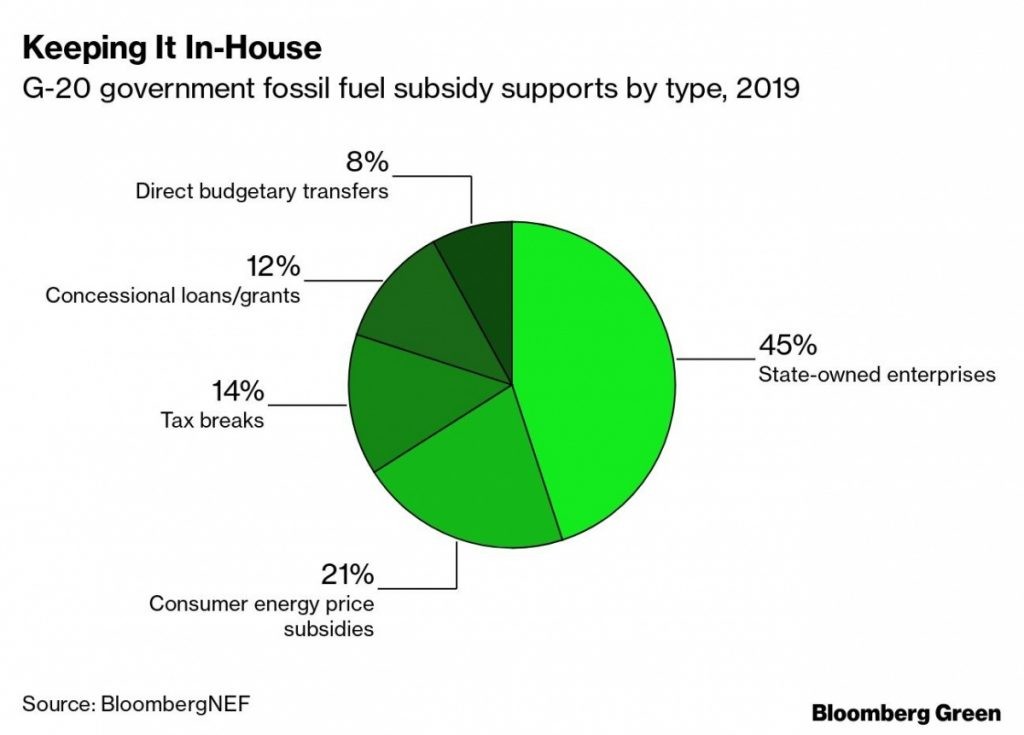One month ago, the International Energy Agency (IEA) published an encouraging report that government subsidies for fossil fuels will fall by more than 40% in 2020. This was good news against the background of the 30% decline reported in 2019, Bloomberg writes.
But these figures do not automatically mean that countries are reducing their support for the industry. There are two reasons for this decrease – the large contraction in consumption during the pandemic and falling prices, the agency said.
The support is much more substantial than direct subsidies and covers investments made by state-owned companies, tax breaks, state guarantees, and remission of concession payments.
Bloomberg NEF’s calculations show that the G20, the group of the most industrialized countries, still supports state-owned energy companies, which are often monopolists in energy supply.
In total, the G20 countries spend between 2015 and 2019 on direct support for coal, oil, and natural gas, as well as fossil fuel combustion capacity, totaling $ 3.3 trillion. In 2015, subsidies for these industries amounted to 706 billion dollars, and in 2019 – 636 billion dollars, a decrease of about 10%.

The most significant support is provided by Saudi Arabia, although the country has halved fossil fuel subsidies. At the same time, however, the United States and Canada have increased government funding for the industry. Within the EU, Germany cuts money by 17%, but at the same time, France increases it by 40%.
Russia and China are also increasing funding for fossil fuels by 4% each, according to Bloomberg data, based on the ratio of the subsidy to the population.
Subsidizing the price of energy for consumers is also key to greening because cheap energy is not saved – neither when it comes to electricity in the home, nor when it comes to fuel in the car. When gasoline is cheap, drivers have less incentive to switch to electric cars.
Decarbonization will be a very difficult process, but not impossible, Bloomberg writes. The agency’s analysts estimate that between $ 92 trillion and $ 173 trillion will have to be invested over the next thirty years to meet climate goals. And every dollar invested in different directions from carbon neutrality will make the realization of the idea even more complicated.
Credit: Deliana Petkova

